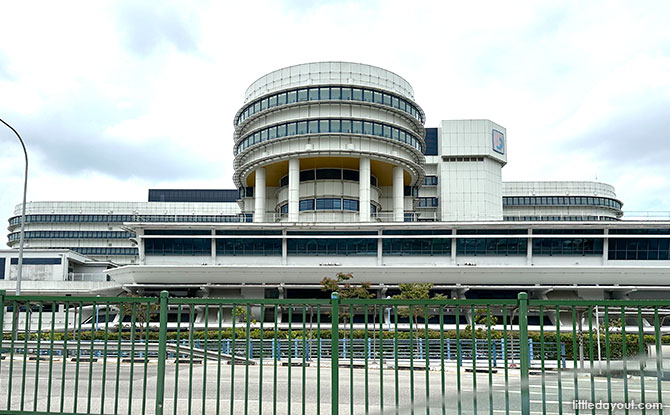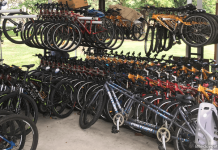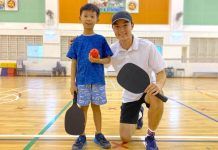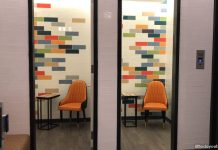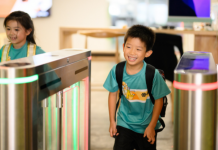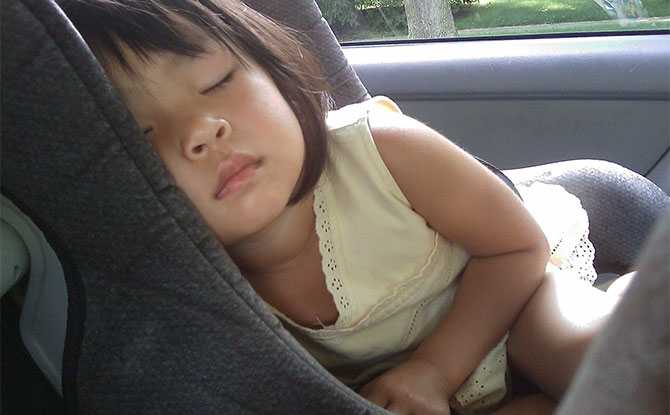
While the nursery rhyme may associate snoring with “the old man”, with younger ones, it can sometimes be associated with sleep apnea in children.
Sleep apnea, also known as Obstructive Sleep Apnea or OSA, results from a blockage of the airway while sleeping, disrupting airflow and interrupting rest at night.
We asked Dr Jenny Tang and Dr Annette Ang from the Healthway Medical Group about sleep apnea in children.
Dr Jenny Tang is a Senior Consultant Paediatrician at SBCC Baby & Child Clinic (Asthma, Lung, Sleep, Allergy & Paediatric Centre) with a special interest in Asthma, Lung, Sleep and Allergy. Prior to joining SBCC, she was the Deputy Head of the Department of Paediatric Medicine at KK Women’s and Children’s Hospital.
BE PSLE-READY: Join Expert Educators for Revision Boosters to Empower P6 Students
BURP: Join the Sound Collector on a Whimsical Chase at Esplanade – Theatres on the Bay
WEEKEND IDEAS: Get Inspirational Ideas of Things to Do
Dr Annette Ang is a Senior Ear, Nose & Throat Consultant at Noble ENT Centre (Mount Alvernia) and was previously a Senior Consultant Paediatric Otolaryngologist at a top paediatric hospital.
Questions About Sleep Apnea in Children
How can I tell if my child has sleep apnea?
Dr Jenny: Possible night and daytime symptoms are:
Night time
- Snoring
- Restless sleep
- Unusual sleeping positions
- Increased work of breathing
- Witnessed apnea
- Gasping and choking
- Excessive sweating
- Bedwetting
- Blueness and fits
Daytime
- Morning headaches
- Excessive daytime sleepiness and tiredness
- Behavioural concerns such as inattention, hyperactivity, emotional outbursts and anger tantrums
- Developmental delay
- Learning difficulties
- Growth disturbances
Dr Anette: A child with OSA may have the following complaints:
- Snoring
- Excessive daytime sleepiness despite a good eight to nine-hour sleep period
- Choking or gasping episodes during sleep
- Hyperactivity in the daytime
- Poor academic performance
- Morning headaches
2. Are there sleep apnea tests for children?
Dr Jenny: Proper evaluation of sleep apnea in children is usually conducted through an attended overnight sleep study or Polysomnography (PSG).
During the test, we record the child’s sleep for one night including brain waves, muscle movements, eye movements, breathing, snoring, oxygen and carbon dioxide levels, heart rate and leg movements.
This is the gold standard for assessment and is designed to be non-invasive and painless.
Overnight recording of oxygen levels which is a less sensitive method for diagnosis is sometimes used if a PSG cannot be conducted.
Dr Anette: A child who snores persistently should be reviewed by an ear, nose and throat (ENT) surgeon.
At the ENT office, we will perform a comprehensive examination which includes an in-office nasoendoscopy to assess the anatomy of the upper airway.
A sleep study or polysomnography may be recommended for further evaluation of the child’s sleep dynamics.
I usually work with a pediatric sleep physician to complete this investigation.
3. Even though my child has healthy sleeping habits currently, will it be possible for him/her to be diagnosed with sleep apnea in the later stage of his/her life?
Dr Jenny: Yes. Sleep apnea is also seen in adolescents and adults where obesity, allergies, smoking and a family history are common contributing factors. Sleep apnea is also seen in adolescents and adults where obesity, allergies, smoking and family history of the same disorder are common contributing factors.
Dr Anette: Yes, that is possible. As children grow and are exposed to childhood infections and environmental allergens, their adenoids and tonsils may enlarge with time.
In addition, should the children put on excessive weight in later part of childhood, they are also predisposed to OSA.
4. What are some of the treatments for sleep apnea?
Dr Jenny: Treatment options depend on contributing factors and if there is a co-morbid disease. These include removal of tonsils and adenoids, Continuous Positive Airway Pressure (CPAP) therapy, orthodontic devices, myofunctional therapy, weight management, treatment of associated medical conditions such as reflux, allergies, asthma, and avoiding passive smoking.
Dr Anette: Our first approach to our pediatric patients is always to manage the condition with medications before we consider surgical means. Most snoring children have underlying untreated or poorly treated allergic rhinitis.
We endeavor to create a treatment plan which would maximize the child’s clinical response to allergic rhinitis – this may involve certain household measures, intranasal steroids, oral antihistamines and other medications.
By and large, upper airway obstruction in children is usually related to hypertrophy of the tonsils and adenoids. In this case, surgery to remove the adenoids and tonsils will result in resolution of the symptoms, and achieve better sleep outcomes for the child.
Other more complex surgeries include tracheostomy, palate surgery, tongue base surgery and remodeling of the facial skeleton. These surgical methods are rarely employed in children.
Weight loss measures may be recommended if the child is likely to benefit.
Continuous Positive Airway Pressure or CPAP, as the name implies, is applied to the narrow upper airway (similar to blowing air continuously into a bouncy castle!) allows it to maintain its shape – essential for oxygen transfer.
This is done via a face mask and special machine at the child’s bedside. This treatment plan is administered by a pediatric sleep physician in consultation with an ENT surgeon.
5. Is sleep apnea a chronic lifetime problem?
Dr Jenny: Many children with mild OSA do get better with ‘watchful waiting’ and medical management of co-morbid disease(s) that improve with time e.g. allergies and asthma. Forty to 70% of children who undergo surgery for OSA recover from the disease.
Children who have persistent risk factors such as obesity, nerve or muscle problems or positive family history of OSA are more likely to suffer from it in the longer term.
Those who have been treated and recovered from OSA through means such as surgery continue to be at a higher risk of OSA in later childhood and adult years, but many will remain well.
Dr Anette: As mentioned above, if the cause of a child’s OSA is enlarged adenoids and tonsils, the surgical removal of these soft tissue structures would result in resolution of the child’s symptoms and improved long-term sleep and learning outcomes for the child.
6. What is the best sleeping position for a child with sleep apnea?
Dr Jenny: OSA is usually worse in the supine (editor’s note: supine position is to lie horizontally with the face and torso facing up, also known as sleeping on the back) than other positions, so sleeping on the side or in the prone position usually reduces the severity of the sleep apnea. Some children sleep with the neck extended to optimise the open airway during sleep.
Dr Anette: Generally, most children with OSA find it hard to sleep in a supine position. They would be more comfortable in a side-sleeping position.
7. Can sleep apnea result in changes in a child’s behaviour?
Dr Jenny: Yes, daytime behavioural changes are common symptoms of sleep apnea. Common noticeable changes include excessive daytime sleepiness, tiredness, inattention, hyperactivity, impulsivity, emotional outbursts and anger tantrums.
Many children thought to have possible ADHD and later found to have OSA drop the ADHD diagnosis after their OSA is treated.
Dr Anette: Studies have shown that OSA presents a huge economic burden to society. Individuals with untreated OSA are associated with poor work performances, occupational injuries and are involved in road traffic accidents more often.
In children, OSA is manifested in poorer academic and extracurricular performances. Some children may be perceived as difficult to manage or as “having a temper” when they are exhibiting poorer executive function due to a chronic lack of quality sleep.
Addressing Questions about Sleep Apnea in Children
Thank you, Dr Jenny and Dr Annette for helping to address these questions that parents have about sleep disorders in children.







